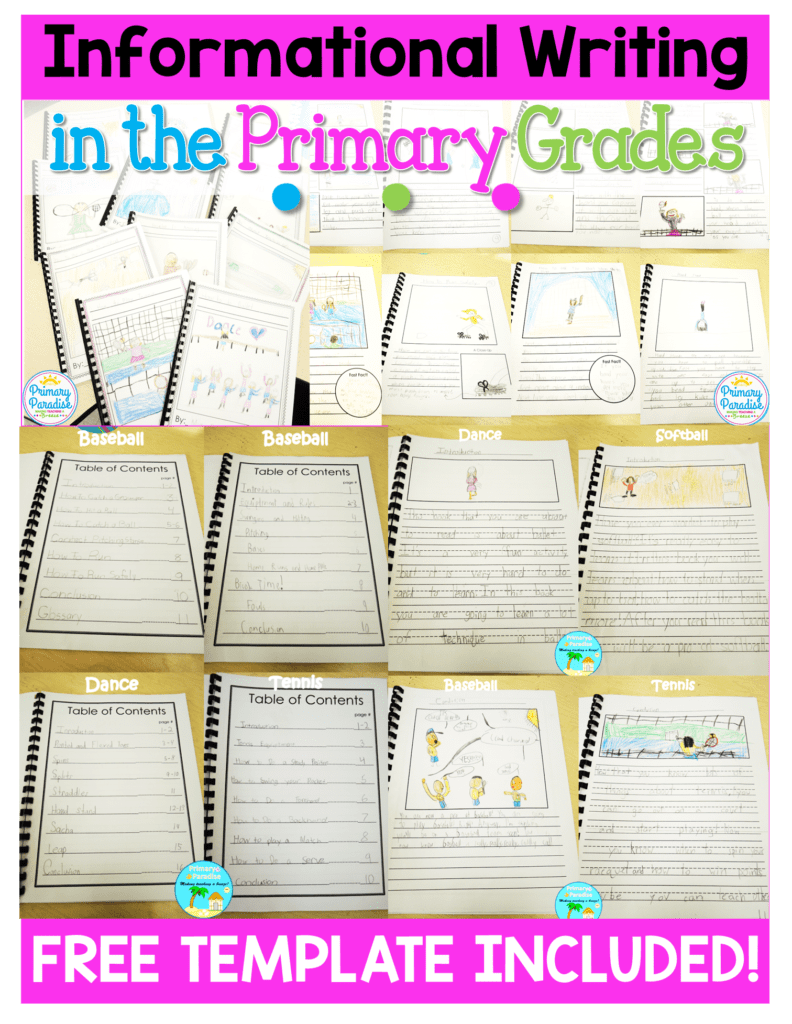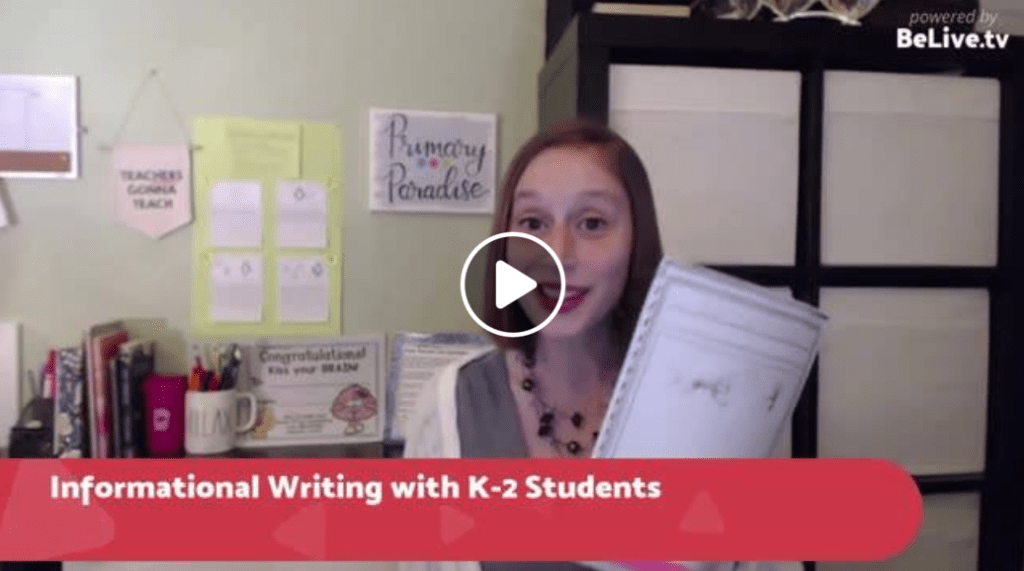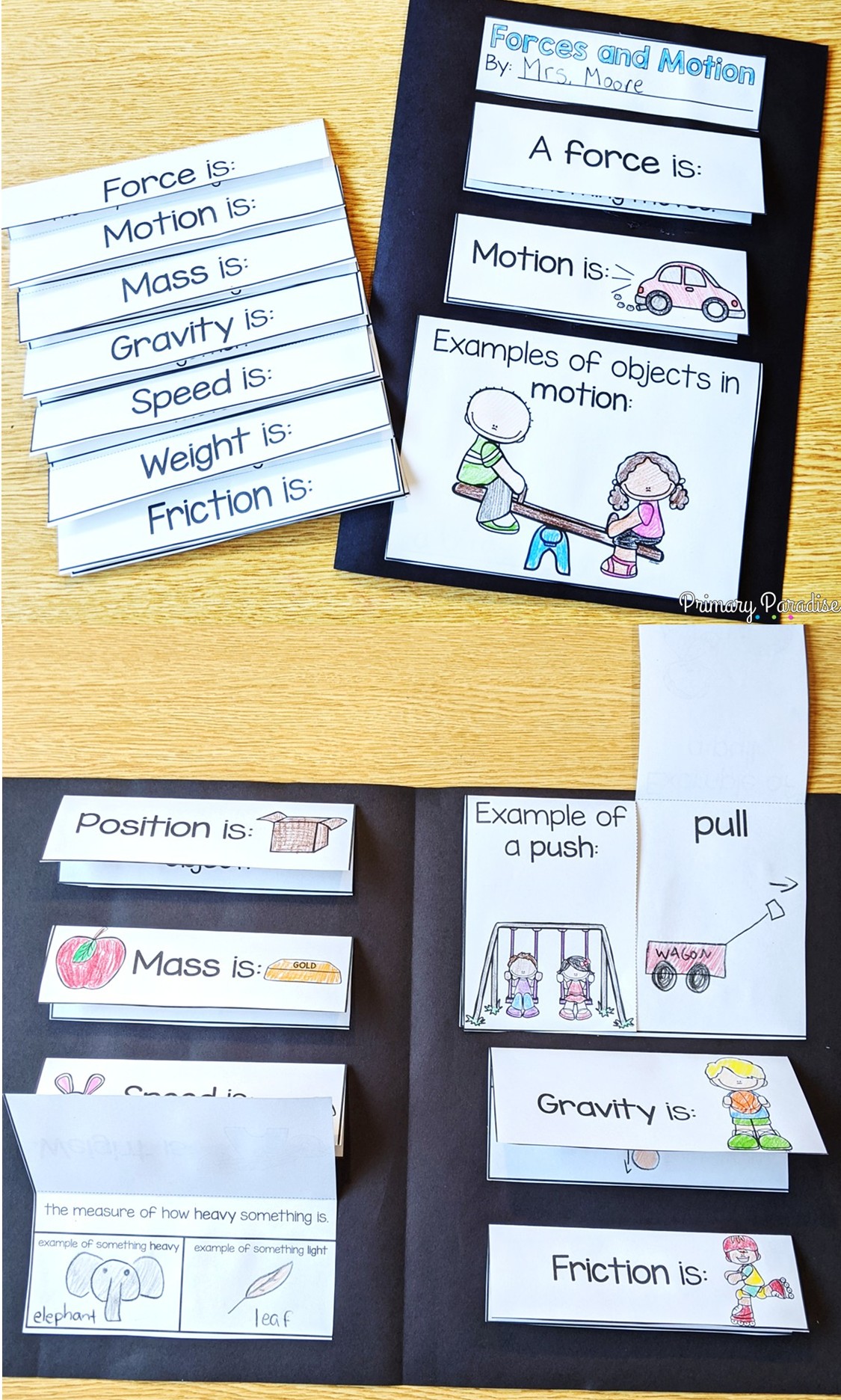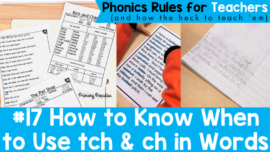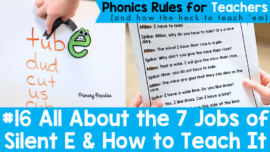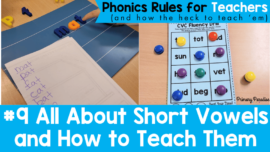Informational writing can be a struggle with lower elementary students, but in this post, I’ll share with you how I was able to help my 2nd graders create detailed and age appropriate informational writing booklets on topics they were comfortable writing about.
Watch my Facebook live on this topic here.
In February, I blogged about using the Lucy Calkins common core writing program, and how we were making catapults and creating lab reports. {Click here to check out that post}.
Well, after we finished our lab reports, we were supposed to move on to creating informational writing books about something related to forces and motion.
The Problem With Lucy Calkins
AND here is where I have a problem with Lucy Calkins. She assumed that just because my students did experiments with forces and motion that they would automatically understand forces and motion concepts like push, pull, gravity, friction, etc. Well, Lucy, that’s not how it works. I totally think learning through experience is fantastic, BUT you need to give kids some background knowledge and leave time for some actual instruction.
How I Fixed It
So, I stepped out from the program a bit and did a mini unit for a few days on forces and motion. I didn’t think it was fair to expect my students to write about something they didn’t fully understand.
We read some books about forces and motion, watched some brainpopjr video clips, had some fantastic discussions, and created a this flip book and mini dictionary.
(Click the picture to check it out in my shop
Getting Started on Their Books
After that, my students totally got the concept and were ready to write their informational books. Lucy (We’re on first name basis now, aren’t you? haha) wanted them to pick something they know about that relates to forces and motion and create an informational book. They were supposed to explain all about it while including how it relates to forces and motion. I was overwhelmed at first. It seemed like a really tall order for 2nd graders (and their very pregnant teacher). However, I dove right in and the results were fantastic.
Most of my students ended up picking sports because they play sports outside of school. They easily relate this to forces and motion. Some topics were- track, baseball, softball, tennis, swimming, surfing, snowboarding, dance, and even bowling.
Table of Contents
The first thing we did was create our table of contents. This allowed them to decide WHAT we would include in our books.
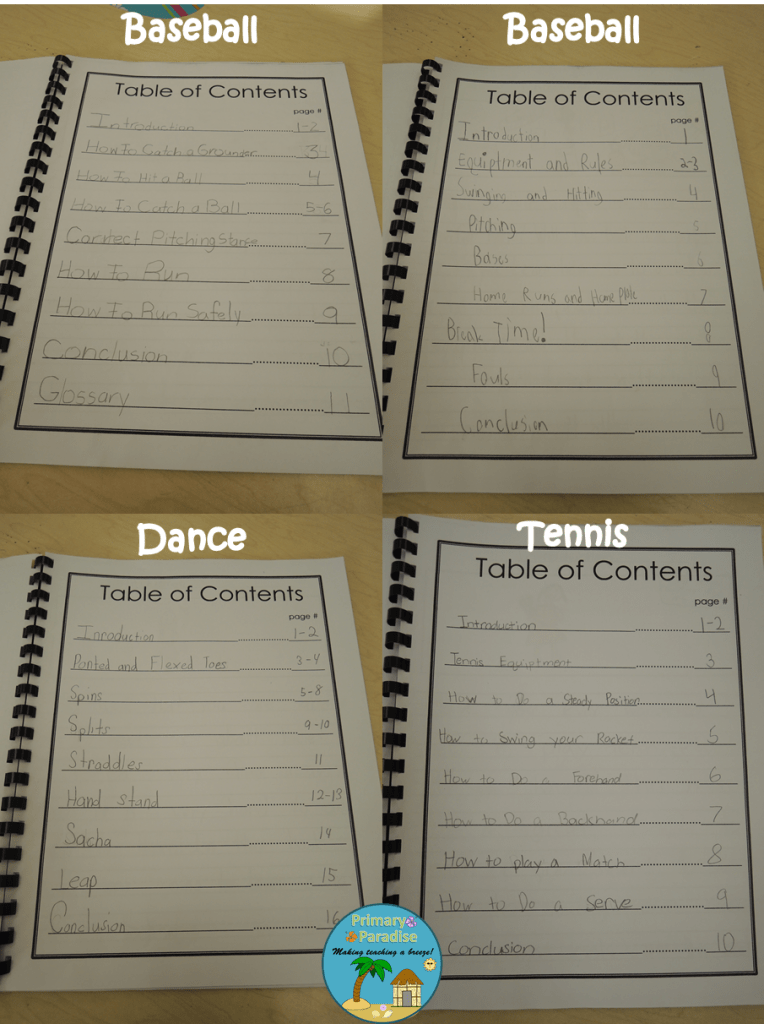
We added the page numbers at the end. In the beginning, we just wrote our topics.
Getting Down to Writing
Then, they began to write. I (of course) model drafting different sections on the topic Lucy gave me in her novel teacher’s guide. Her example was cleaning by the way… how random. One thing I really liked about the way she had them write was that I gave them a bunch of paper choices. They could choose whatever one fit their topic. I didn’t like that she didn’t include any of the paper choices and I had to create them on my own. (You can download them for free at the end of this post.)
Here are many of the different options my kiddos had.
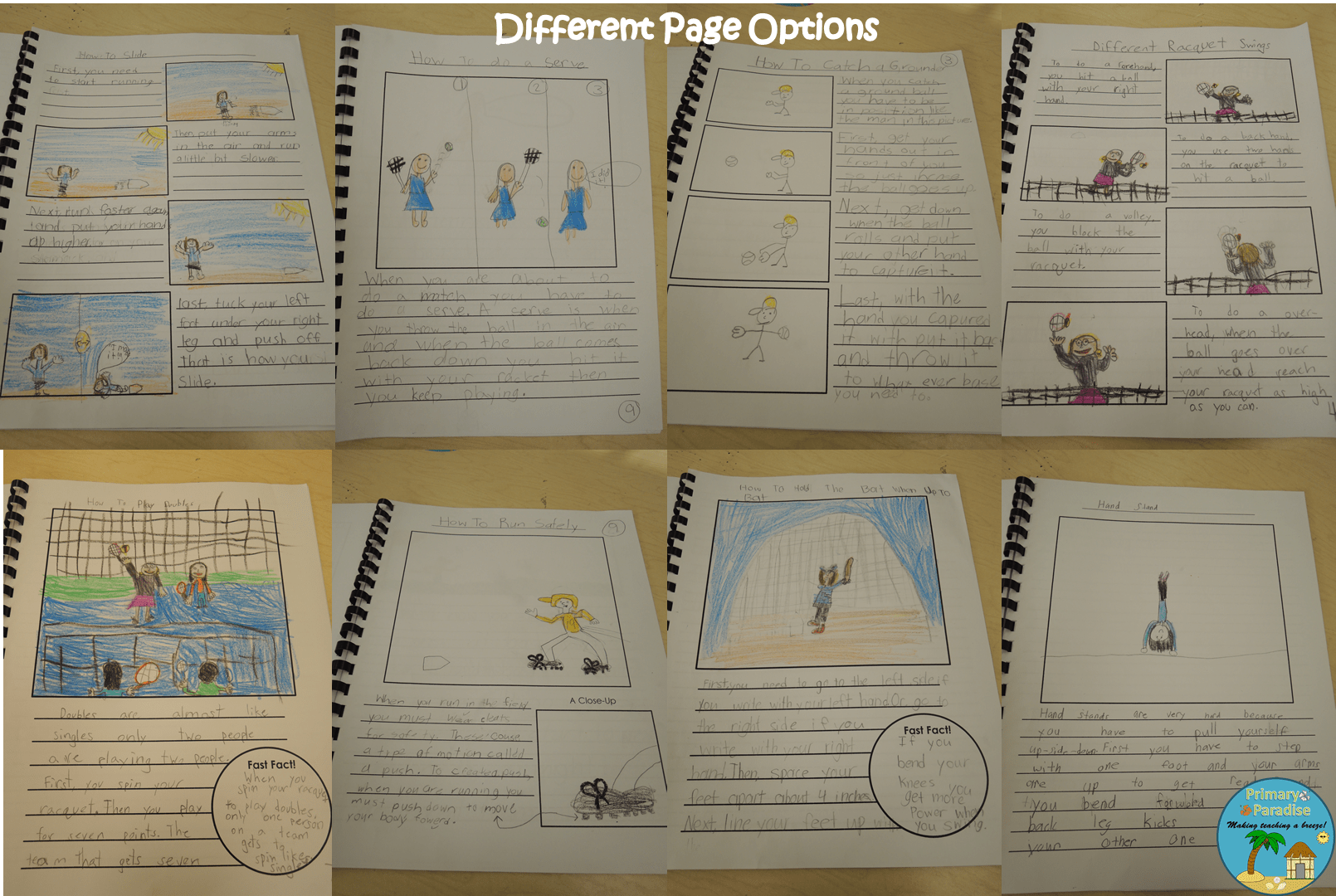
Let me tell you, it took a LONG time for my kiddos to complete all of their chapters. However, I have never seen them so engaged in writing. They loved every minute of it, and their writing was really good!
After we finished all of our chapters, we went back and wrote an introduction and conclusion.
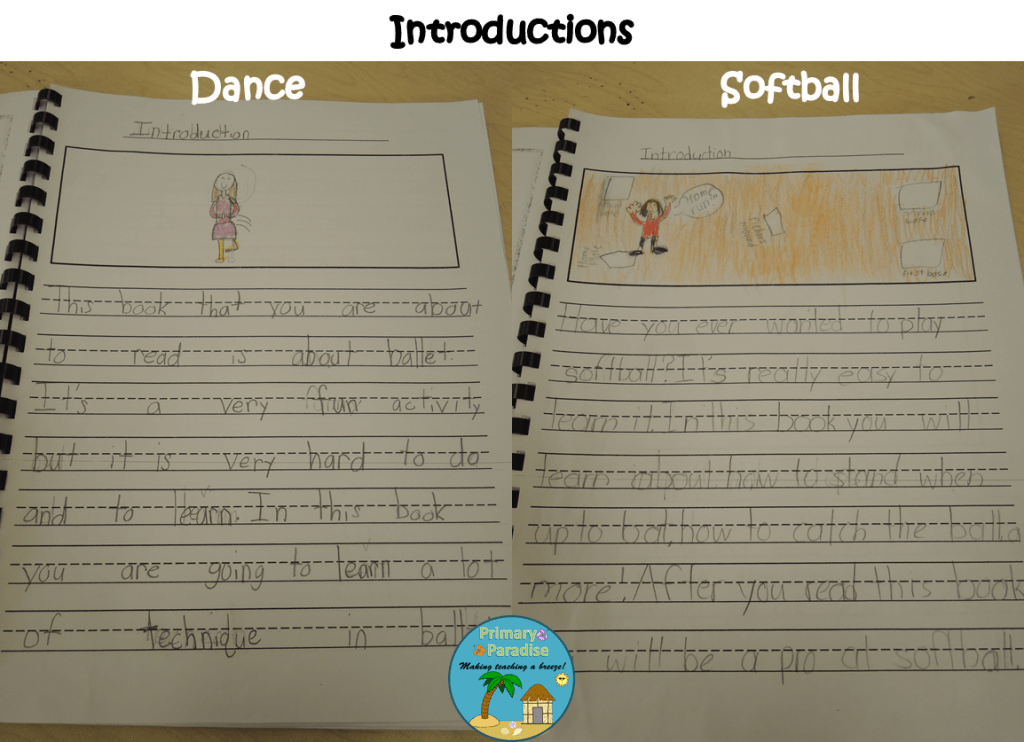
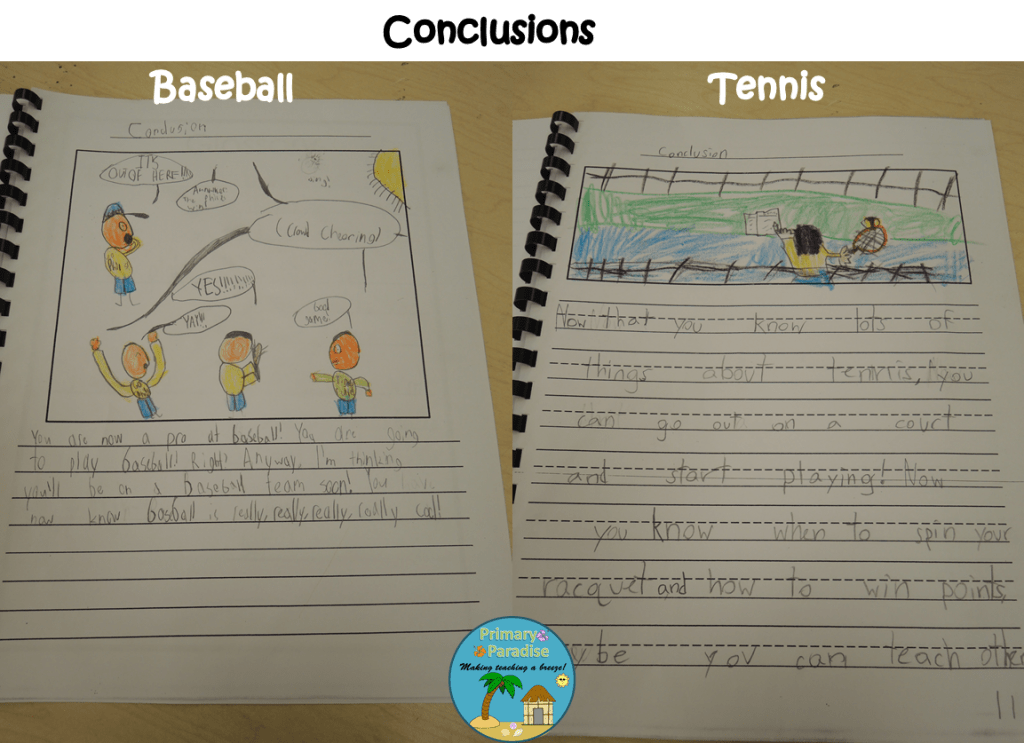
Why they wrote their introductions last:
It was much easier to write an introduction and a conclusion once their books were done because they knew what was in their books. Writing an introduction before they wrote their books would not have worked.
Now, again, I veered from Lucy’s path a little bit. In true LC fashion, she had the students edit their work on their own and that’s it. My students worked so hard on their books. I thought they deserved more than that. I did have them edit their own work first, but then I sat with each of them together and helped them edit. Any misspelled word in their book were pointed out and I had them look them up on the word wall or dictionary.
Once their books were all edited, they each created a glossary.
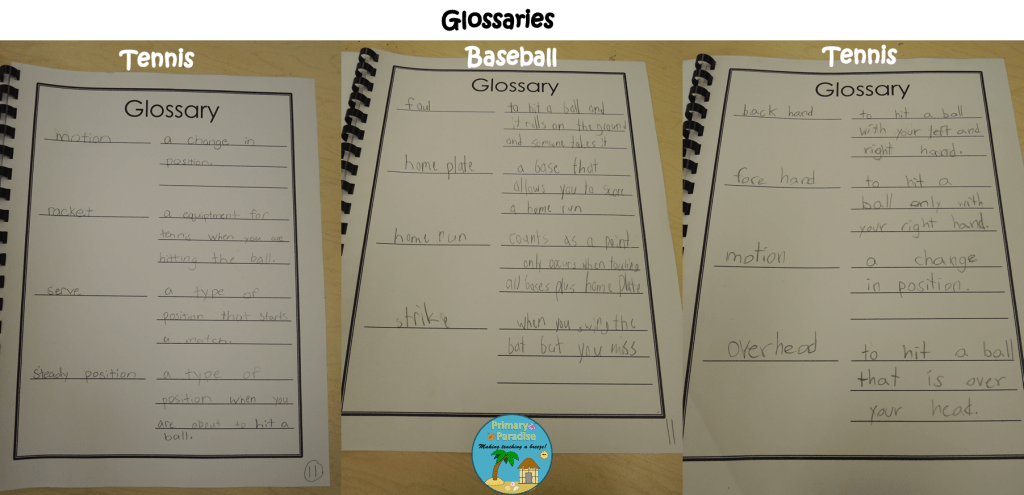
Last, they created their covers for their books.
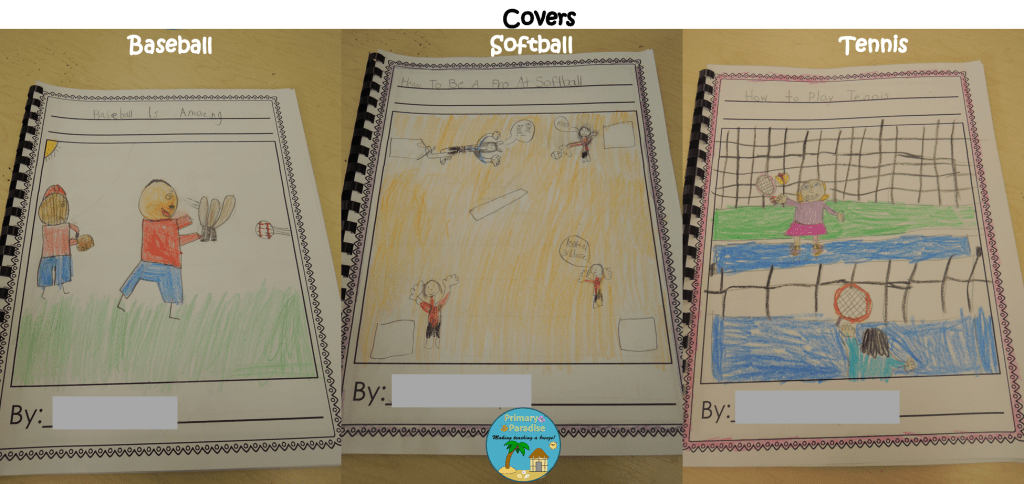
I can’t even express how much excitement and pride my kiddos felt when I handed them their bound and completed informational books. They were SO proud of themselves and each other, and I was so proud of them too. They did such an excellent job!
Here’s a picture of them displayed in the hallway.
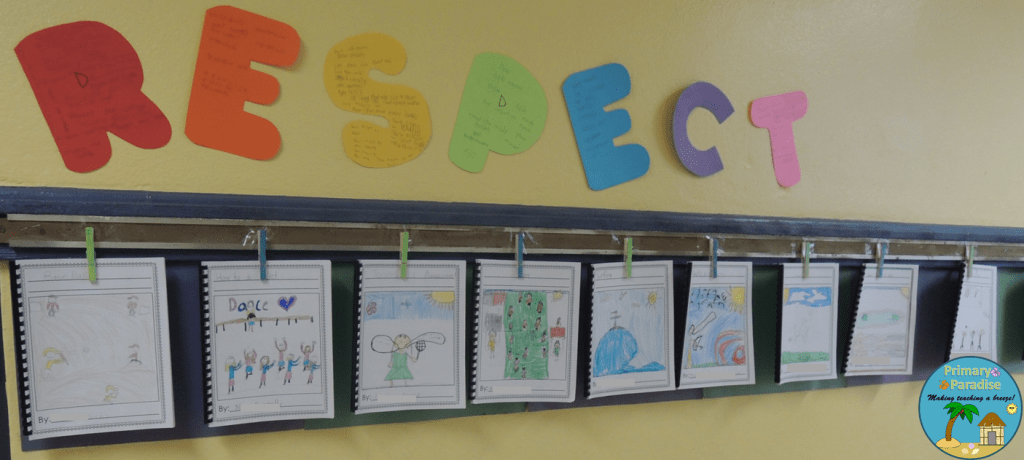
So there you have it. Did I do everything the “Lucy” way? No. Did I take some valuable ideas from her? Yes. In the end, combining her ideas and techniques with my own created a fantastic book that hopefully each of my students will keep for a long time.
Head to my free resource library for subscribers to download the booklet template (Subscribe here to get the password)!
Click here to read more about taking the frustration out of writing instruction!
Read about how to teach narrative writing in primary grades.
